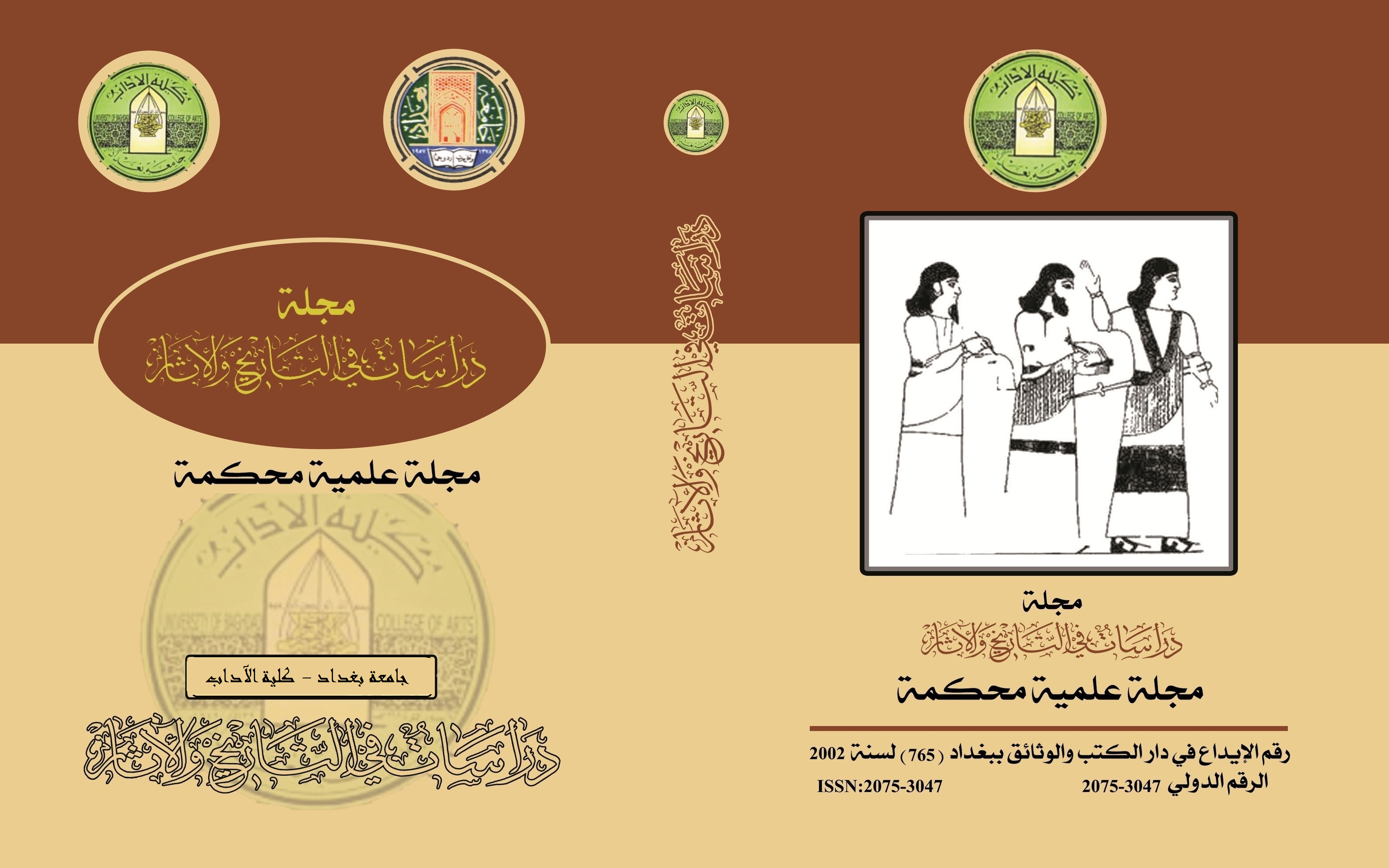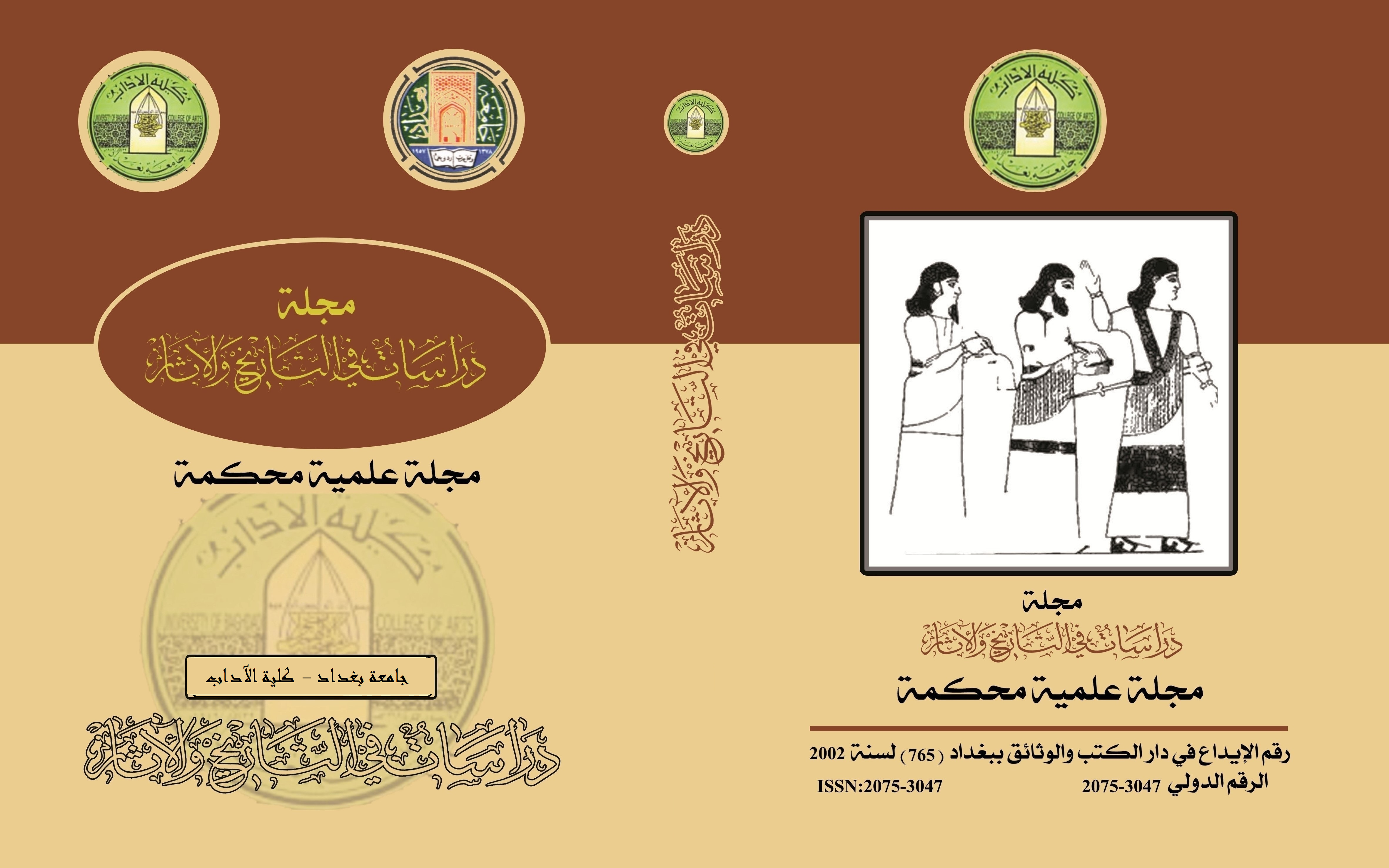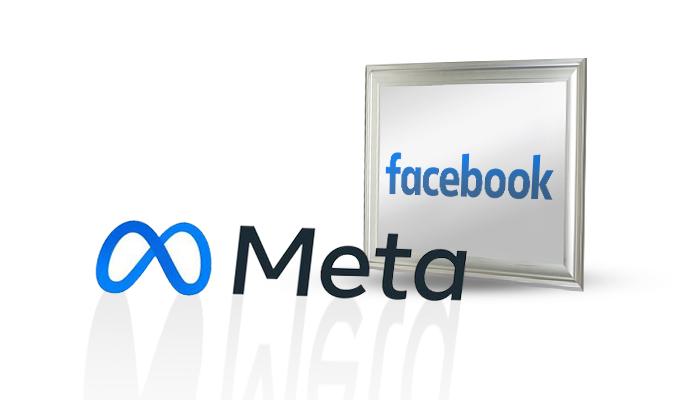السياحة في المتحف الحديث: فلسفة التعليم .. تكنولوجيا الترفيه
الكلمات المفتاحية:
السياحة، التقنيات الحديثة، تكلنوجيا التعليم، المتحف الحديثالملخص
بعد أن بدا أن أيام المتحف بوصفه مؤسسة تؤدي وظائفها التقليدية، باتت معدودة وسرعان ما تختفي، أصبحت هذه المؤسسة مع مطلع القرن الحادي والعشرين أكثر أهمية من أي وقت مضى, إذ أصبحنا نتعامل مع شبكات متاحف موسعة إلى أقصى حد سواء من حيث العدد إذ نرى هناك زيادة بنسبة 10٪ كل خمس سنوات على عكس المنطق الإقتصادي والحس السليم، أو من الناحية الجيوسياسية فقد أصبح المتحف يصنع مسيرته المنتصرة في جميع قارات الأرض، وشكّل سمة جديدة تعمل على تنمية البلدان والمجتمعات, وأصبح رمزاً للمجتمع فضلاً عن كونه رمزاً لمجتمع متطور، أو على الأقل مجتمع يريد أن يكون كذلك.
وقد رافق عملية التوسع في شبكات المتاحف تحولات عميقة في كيان المتحف نفسه، إذ صممت المتاحف الحديثة لاستيعاب أشكال جديدة من النشاطات عن طريق العمل على تطوير تقنيات ترفيهية أكثر، والعمل على توظيف كل موارد المتحف من أجل تطوير قوي لصناعة السياحة العالمية.
ويميز الإختصاصيون في العمل السياحي مجالات عدة للأنشطة التعليمية للمتحف، ويعملون على جعلها جزءاً من الأنشطة السياحية، ويسعون لتطويرها بشكل مكثف وجعلها مفيدة في مجال المعلومات وفي مجال الترفيه, إذ يشير الخبراء إلى أن الترفيه نشاط واعد يمكن أن تقدمه المتاحف في نظام السياحة, وسعوا عند إعدادهم برامج عمل المتاحف أن يحددوا الأولويات في نسبة المعلومات والترفيه لهذا البرنامج، لأن برنامج ترفيهي ناجح في أروقة المتحف، في بعض الأحيان، يترك انطباعات ومشاعر وأفكار أكثر وضوحاً حول هذا الجزء من التراث الثقافي (بالمعنى الواسع)، الذي كان للسائح أمكانية رؤيته في المتحف, إن السائح لا يستطيع أن يستسيغ فكرة أن جولته في المتحف هي فقط للحصول على معلومات، لذا فإن استخدام تقنيات إضافية يجعل رحلته ممتعة ونافعة.
ونجد أن بحثنا الموسوم : السياحة في المتحف الحديث: فلسفة التعليم .. تكنولوجيا الترفيه, والذي قد تناولنا فيه (الدور الترفيهي للمتحف, والمتاحف والسياحة, المتاحف والتقنيات الحديثة, وهذه مادة البحث التي جاءت مواكبة للتطور العلمي والتكنلوجي والتقنيات الحديثة والتي من خلالها يمكن الإستفادة لجذب السياح والمهتمين وعامة الناس, فضلاً عن أنواع المتاحف الحديثة, والمتاحف ذات الفراغات الإفتراضية, المتاحف الإلكترونية المنشورة على شبكة الإنترنت, والمتاحف الفنية .. وغيرها ) ومن هنا يمكن القول أن المتاحف أصبحت مركز لجذب السّياح، لا سيما تلك التي واكبت التطور التكنولوجي وعرضت محتوياتها بأساليب فنية وتقنية عالية الجودة ومؤثرة في الجذب السياحي, ونأمل أن يكون العمل في المتاحف في إطار مهني محترف يجعل منها مناطق جذب في مدننا المختلفة للسكان المحليين وللسياح من الخارج, وإن تُستحدث متاحف حديثة متخصصة تتبنى الوسائل والتقنيات الحديثة، وإن تكون لدينا وسائل دعاية وإعلام مكتوبة ومرئية قادرة على التأثير في المتلقي وحثه على زيارة المتاحف والتفاعل معها.
المراجع
- العوامي، عياد موسى(1984). مقدمة في علم المتاحف. ليبيا. ص،7/ محمد، رفعت موسى(2002). مدخل إلى فن المتاحف. القاهرة. ص، 13 .
- دعبس، محمد إبراهيم(2004). متاحف العالم والتواصل الحضاري. القاهرة, ص، 38.
- Miles,R (2002). Towards the Museum of Future. London.p,27-30.
- فرحات، رياض (2005). السياحة ومفهوم الاستدامة. الجزائر. ص، 8/زكي، وفاء إبراهيم(2006). دور السياحة في التنمية الاجتماعية، دراسة تقويمية للقرى السياحية. القاهرة. ص، 5/ فريحة، ليندا، خروف، منير(2002).المتاحف في الجزائر ودورها في السياحة. الجزائر. ص، 3-4.
- لمعي، عبد الرحيم(2014). الدور التثقيفي للمتاحف الجزائرية. الجزائر. ص،125-126.
المصدر نفسه، ص ، 127.
- هيرمان، ياني (1998). المتاحف والسياحة، الثقافة والإستهلاك. ترجمة: حمدي الزيات. القاهرة. ص، 5.
- سيد أحمد، أيمن الطيب (2009).المتحف في السودان ودورها في السياحة. الخرطوم. ص، 62/ فريحة، ليندا، خروف، منير(2002). المصدر السابق الذكر، ص 5-6.
- النحاس ،محمد مصطفى(1990 ). التأثير المتبادل بين الإدراك الحسي والتنظيم الداخلي للمتحف .القاهرة. ص16،/الصيرفي، محمد(2007). السياحة والبيئة. الإسكندرية. ص، 25.
- حسين، هشام محمد(2012).أثر التقنيات الحديثة على تطوير المتاحف في مصر. القاهرة. ص ، 2.
- Alexsander,E(1974).Museums and how to use them. London.p,76.
- Timothy,D,J(2003).Heritage Tourism. London.p,20.
- Hermez , N(2006).Tourist planning and Development. Damascus.p,4.
- Timothy,D,J(2003).Op.cit.p,79.
- سونتاغ، سوزان (2009). جماليات الصمت. ترجمة، عباس المفرجي. عمان. ص،12.
- زكي، وفاء إبراهيم(2006). المصدر السابق الذكر، ص، 27/ الحجي، سعيد (2014). متاحف الآثار هويتها، تطورها وواقعها المعاصر. مجلة جامعة دمشق–المجلد 30 ، عدد 3-4، ص 553.
- آدمز، فيليب(1993). دليل تنظيم المتاحف. ترجمة محمد حسن. القاهرة. ص، 11/ رضوان، هبة (2004). التصميم الداخلي للمتاحف العلمیة، دراسة میدانیة، المتاحف الطبیة . الإسكندریة / النحاس، محمد مصطفى (1990 ). المصدر السابق الذكر، ص، 18.
- زوهير، مالكي (2009). مكتبات المتاحف الوطنية الجزائرية: شروط وإمكانيات الربط على شبكة إنترنت. الجزائر. ص، 30/الحفناوي، عمرو عبد الوارث قطب ( ١٩٩٤). التصمیم الداخلي لمتاحف الفنون. الإسكندرية. ص،45/بخوش، مراد(1997). المتحف بين حداثة المفهوم وتهميش الواقع، المتحف والمدرسة. بيروت. ص،33.
- غنيمة ، عبد الفتاح مصطفى (1990). المتاحف والمعارض والقصور وسائل تعليمية. الإسكندرية. ص، 17/ حسين، هشام محمد (2012). أثر التقنيات الحديثة على تطوير المتاحف في مصر. القاهرة. ص ، 21.
- بخوش، مراد (1997). المصدر السابق الذكر، ص،34./زوهير، مالكي (2009).المصدر السابق الذكر، ص ، 31.
- عاصم، أيمن محمد (2007). إدراك الفكر التصميمي للاتجاهات المعاصرة في عمارة المتحف. القاهرة. / دعبس ، محمد إبراهيم(2004). المصدر السابق الذكر، ص، 39./هيرمان، ياني (1998). المصدر السابق الذكر، ص 7.
- العطار، حسین إبراهيم ( ٢٠٠٤). المتاحف عمارة وفن وإدارة. القاهرة. ص، 32/ فريحة، ليندا، خروف، منير(2002). المصدر السابق الذكر، ص18.
- سيد أحمد، أيمن الطيب (2009). المصدر السابق الذكر، ص 60-63/ الخضيري، محسن أحمد (1989). التسوق السياحي. مدخل اقتصادي متكامل. القاهرة. ص، 29.
مصادر البحث العربية والأجنبية:
1- آدمز، فيليب (1993). دليل تنظيم المتاحف. ترجمة: محمد حسن. القاهرة.
2- بخوش، مراد (1997). المتحف بين حداثة المفهوم وتهميش الواقع، المتحف والمدرسة. بيروت.
3- حسين، هشام محمد (2012). أثر التقنيات الحديثة على تطوير المتاحف في مصر. القاهرة.
4- الحجي، سعيد (2014). متاحف الآثار هويتها، تطورها وواقعها المعاصر. مجلة جامعة دمشق–المجلد 30 ، عدد 3-4.
5- الحفناوي، عمرو عبد الوارث قطب ( ١٩٩٤). التصمیم الداخلي لمتاحف الفنون. الإسكندرية.
6- الخضيري، محسن أحمد (1989). التسوق السياحي، مدخل اقتصادي متكامل. القاهرة.
7- دعبس، محمد إبراهيم (2004). متاحف العالم والتواصل الحضاري. القاهرة.
8- رضوان،هبة (2004). التصميم الداخلي للمتاحف العلمية، دراسة میدانیة، المتاحف الطبیة. الإسكندریة.
9- زكي، وفاء إبراهيم (2006). دور السياحة في التنمية الإجتماعية، دراسة تقويمية للقرى السياحية. القاهرة.
10- زوهير، مالكي (2009). مكتبات المتاحف الوطنية الجزائرية: شروط وإمكانيات الربط على شبكة الإنترنت .الجزائر.
11- سيد أحمد، أيمن الطيب (2009). المتحف في السودان ودورها في السياحة. الخرطوم.
12- سونتاغ، سوزان (2009). جماليات الصمت. ترجمة: عباس المفرجي. عمان.
13- الصيرفي، محمد (2007). السياحة والبيئة. الإسكندرية.
14- عاصم، أيمن محمد (2007). إدراك الفكر التصميمي للاتجاهات المعاصرة في عمارة المتحف. القاهرة.
15- عبدالسميع، صبري (1994). نظرية السياحة. القاهرة.
16- العطار، حسین إبراهيم ( ٢٠٠٤). المتاحف عمارة وفن وإدارة. القاهرة.
17- العوامي، عياد موسى (1984). مقدمة في علم المتاحف. ليبيا.
18- غنيمة، عبد الفتاح مصطفى (1990). المتاحف والمعارض والقصور وسائل تعليمية. الإسكندرية.
19- فريحة، ليندا، خروف، منير(2002). المتاحف في الجزائر ودورها في السياحة. الجزائر.
20- فرحات، رياض (2005). السياحة ومفهوم الإستدامة. الجزائر.
21- لمعي، عبد الرحيم (2014). الدور التثقيفي للمتاحف الجزائرية. الجزائر.
22- محمد، رفعت موسى (2002). مدخل إلى فن المتاحف. القاهرة.
23- النحاس ،محمد مصطفى (1990 ). التأثير المتبادل بين الإدراك الحسي والتنظيم الداخلي للمتحف. القاهرة.
24- هيرمان، ياني (1998). المتاحف والسياحة، الثقافة والإستهلاك. ترجمة: حمدي الزيات. القاهرة.
25- Alexsander,E (1974). Museums and how to use them. London.
26- Hermez , N (2006) .Tourist planning and Development. Damascus.
27- Miles,R (2002). Towards the Museum of Future .London.
28- Timothy,D,J (2003). Heritage Tourism. London.
التنزيلات
منشور
إصدار
القسم
الرخصة

هذا العمل مرخص بموجب Creative Commons Attribution 4.0 International License.
:حقوق الطبع والنشر والترخيص
بالنسبة لجميع البحوث المنشورة في مجلة دراسات في التاريخ والآثار، يحتفظ الباحثون بحقوق النشر. يتم ترخيص البحوث بموجب ترخيص Creative Commons CC BY 4.0 المفتوح ، مما يعني أنه يجوز لأي شخص تنزيل البحث وقراءته مجانًا. بالإضافة إلى ذلك ، يجوز إعادة استخدام البحث واقتباسه شريطة أن يتم الاستشهاد المصدر المنشور الأصلي. تتيح هذه الشروط الاستخدام الأقصى لعمل الباحث وعرضه.
:إعادة إنتاج البحوث المنشورة من الناشرين الآخرين
من الضروري للغاية أن يحصل الباحثون على إذن لإعادة إنتاج أي بحث منشورة (أشكال أو مخططات أو جداول أو أي مقتطفات من نص) لا يدخل في نطاق الملكية العامة أو لا يملكون حقوق نشرها. يجب أن يطلب الباحثون إذنًا من مؤلف حقوق النشر (عادة ما يكون الناشر).
يطلب الإذن في الحالات التالية:
بحوثك الخاصة المنشورة من قِبل ناشرين آخرين ولم تحتفظ بحقوق النشر الخاصة بها.
مقتطفات كبيرة من بحوث أي شخص أو سلسلة من البحوث المنشورة.
استخدم الجداول والرسوم البيانية والمخططات والمخططات والأعمال الفنية إذا لم يتم التعديل عليها.
الصور الفوتوغرافية التي لا تملك حقوق لنشرها.
لا يطلب الإذن في الحالات التالية:
إعادة بناء الجدول الخاص بك مع البيانات المنشورة بالفعل في مكان آخر. يرجى ملاحظة أنه في هذه الحالة يجب عليك ذكر مصدر البيانات في شكل "بيانات من ..." أو "مقتبس من ...".
تعتبر عروض الأسعار القصيرة معقولة الاستخدام العادل ، وبالتالي لا تتطلب إذنًا.
الرسوم البيانية ، الرسوم البيانية ، المخططات ، الأعمال الفنية التي أعاد الباحث رسمها بالكامل والتي تم تغييرها بشكل ملحوظ إلى درجة لا تتطلب الاعتراف.
الحصول على إذن
لتجنب التأخير غير الضروري في عملية النشر ، يجب أن تبدأ في الحصول على أذونات في أقرب وقت ممكن. لا يمكن لمجلة الآداب نشر بحث مقتبس من منشورات أخرى دون إذن.
قد يمنحك مالك حقوق الطبع والنشر تعليمات بشأن شكل الإقرار الواجب اتباعه لتوثيق عمله ؛ بخلاف ذلك ، اتبع النمط: "مستنسخ بإذن من [المؤلف] ، [كتاب / المجلة] ؛ نشره [الناشر] ، [السنة]." في نهاية شرح الجدول ، الشكل أو المخطط.



















